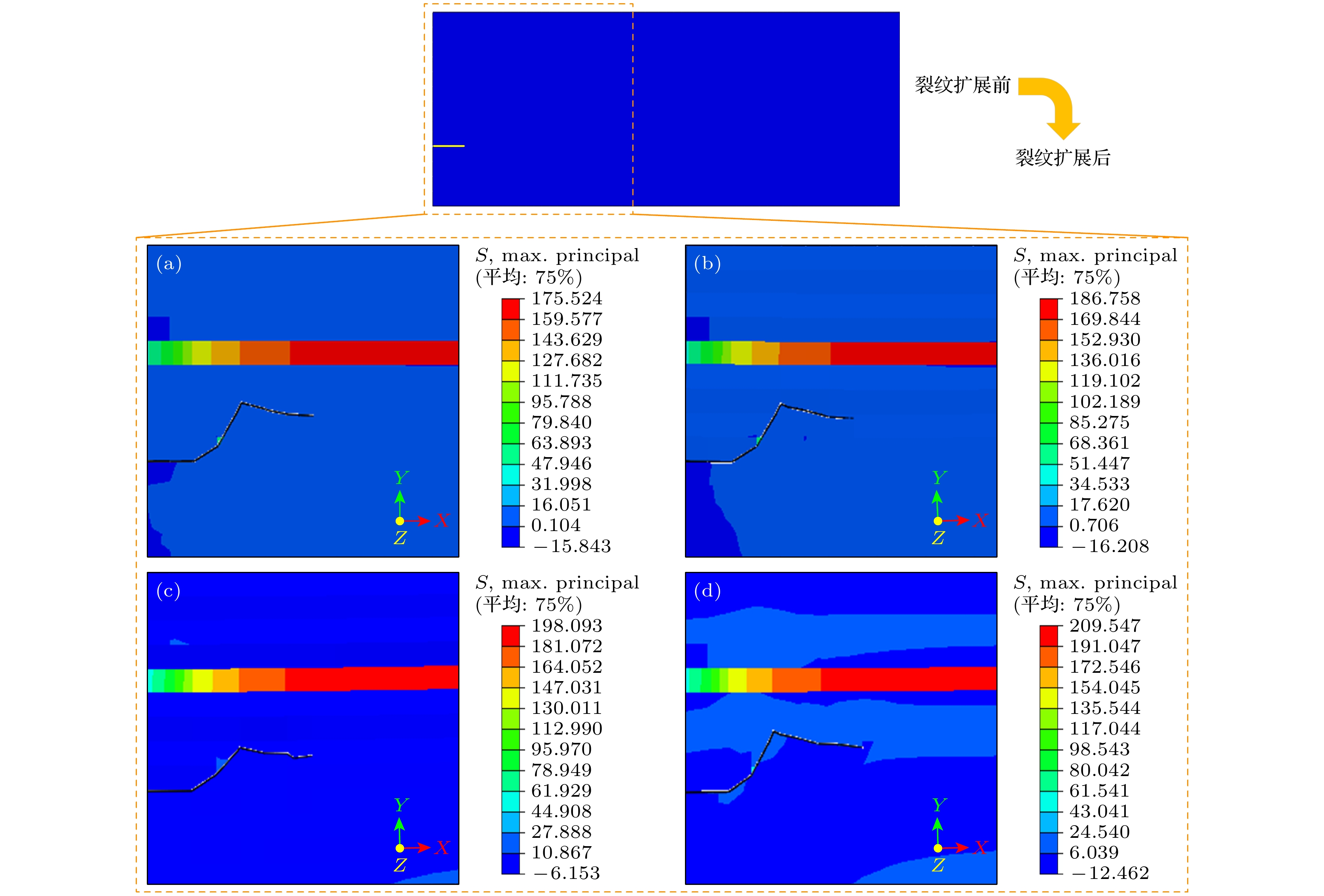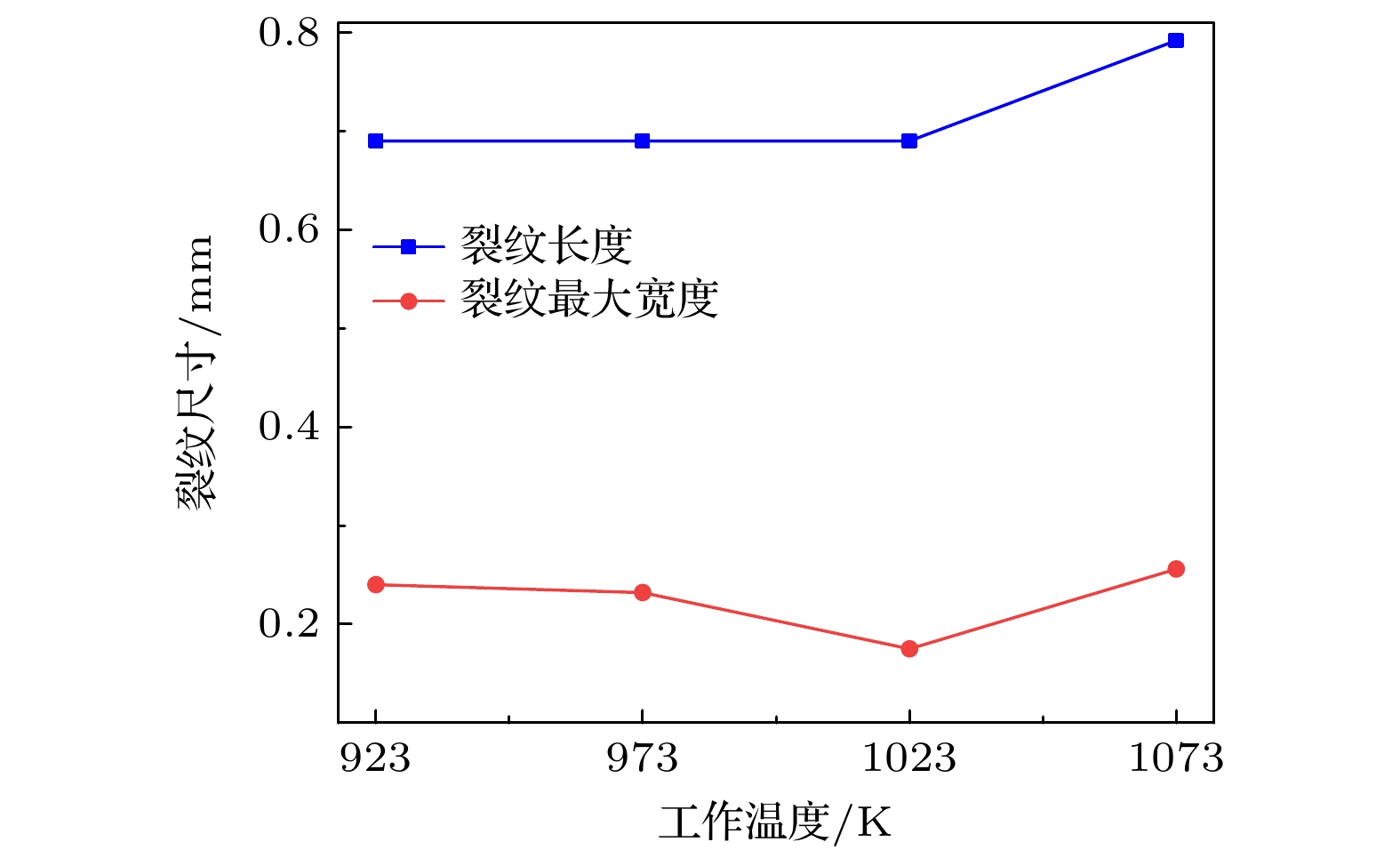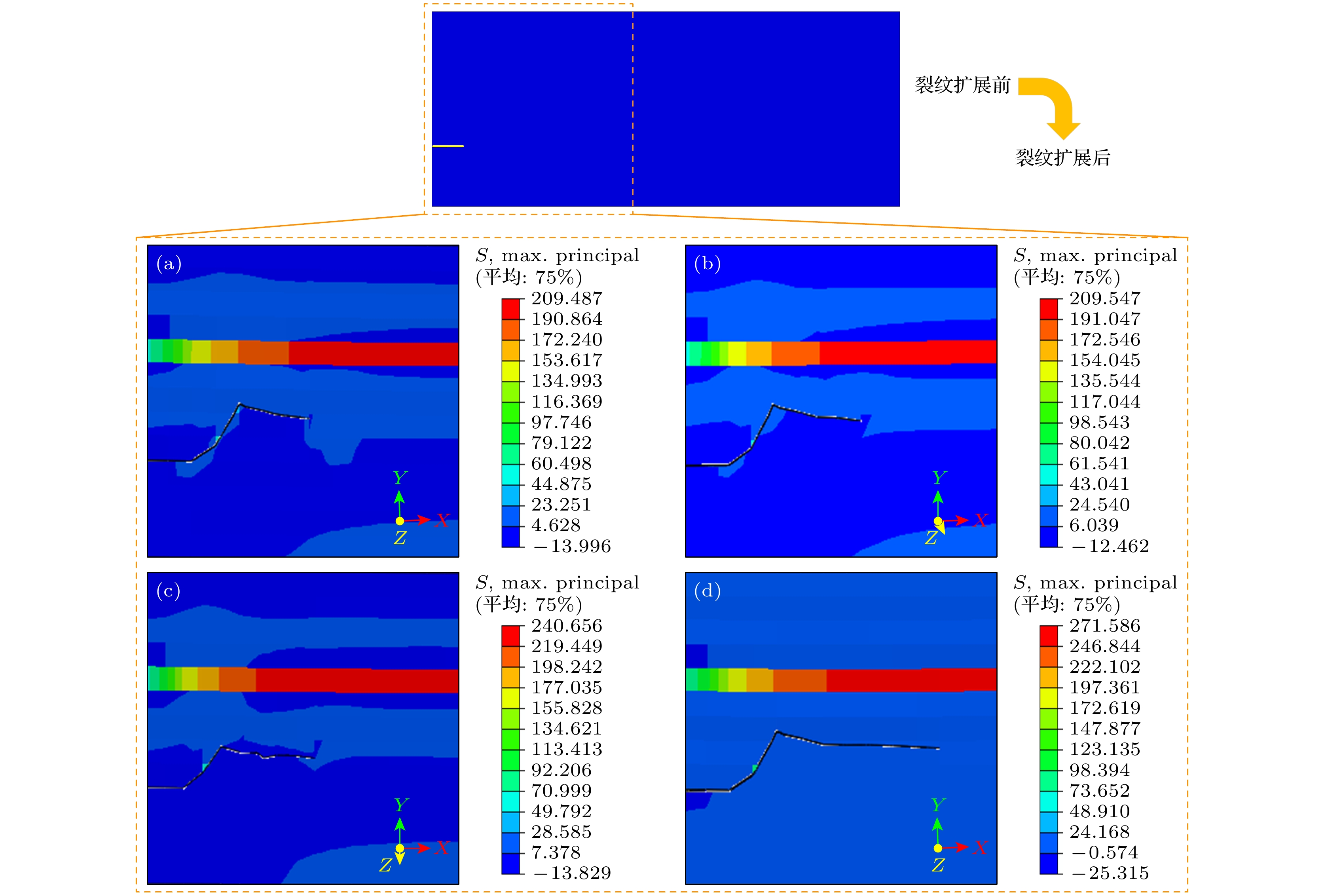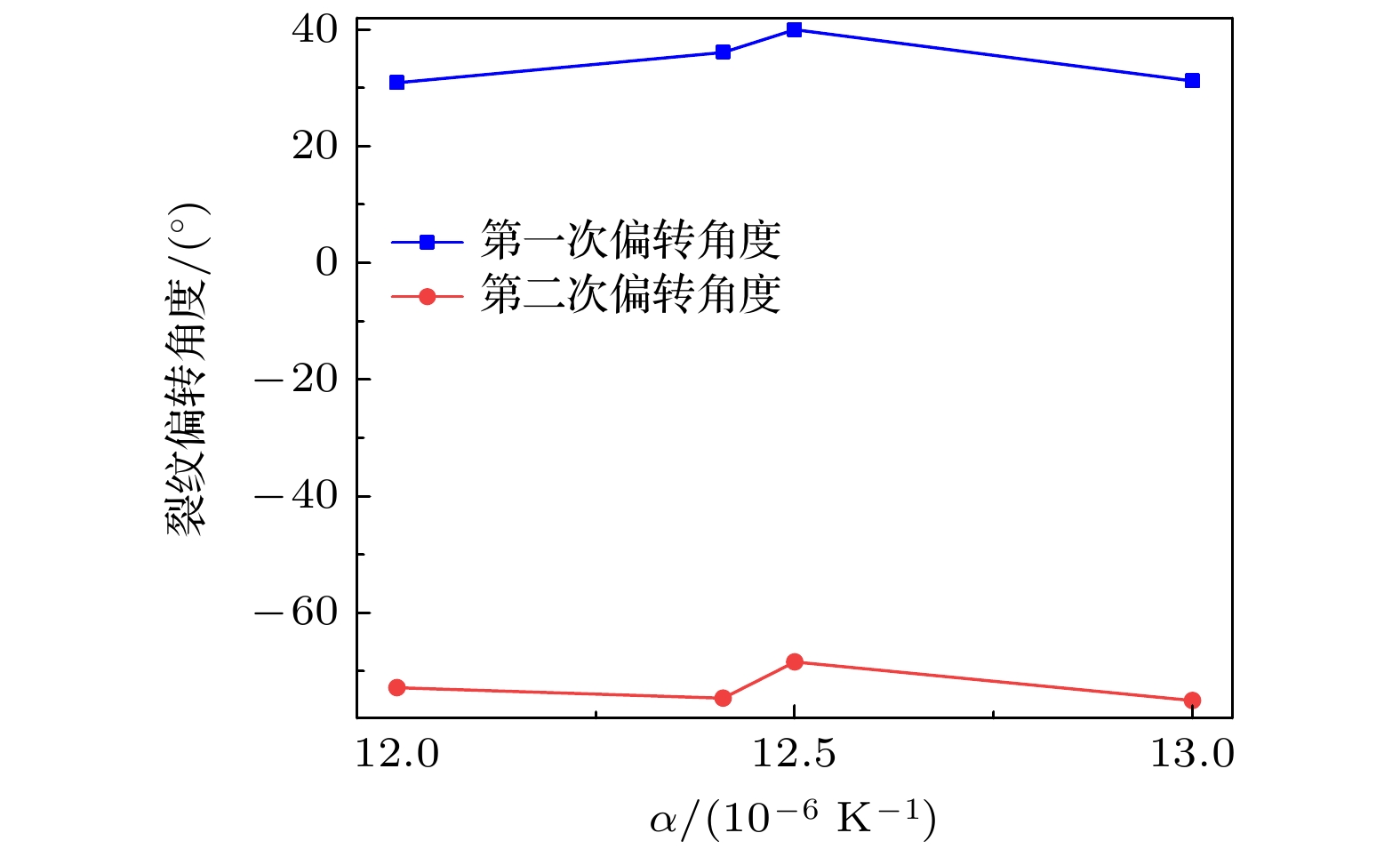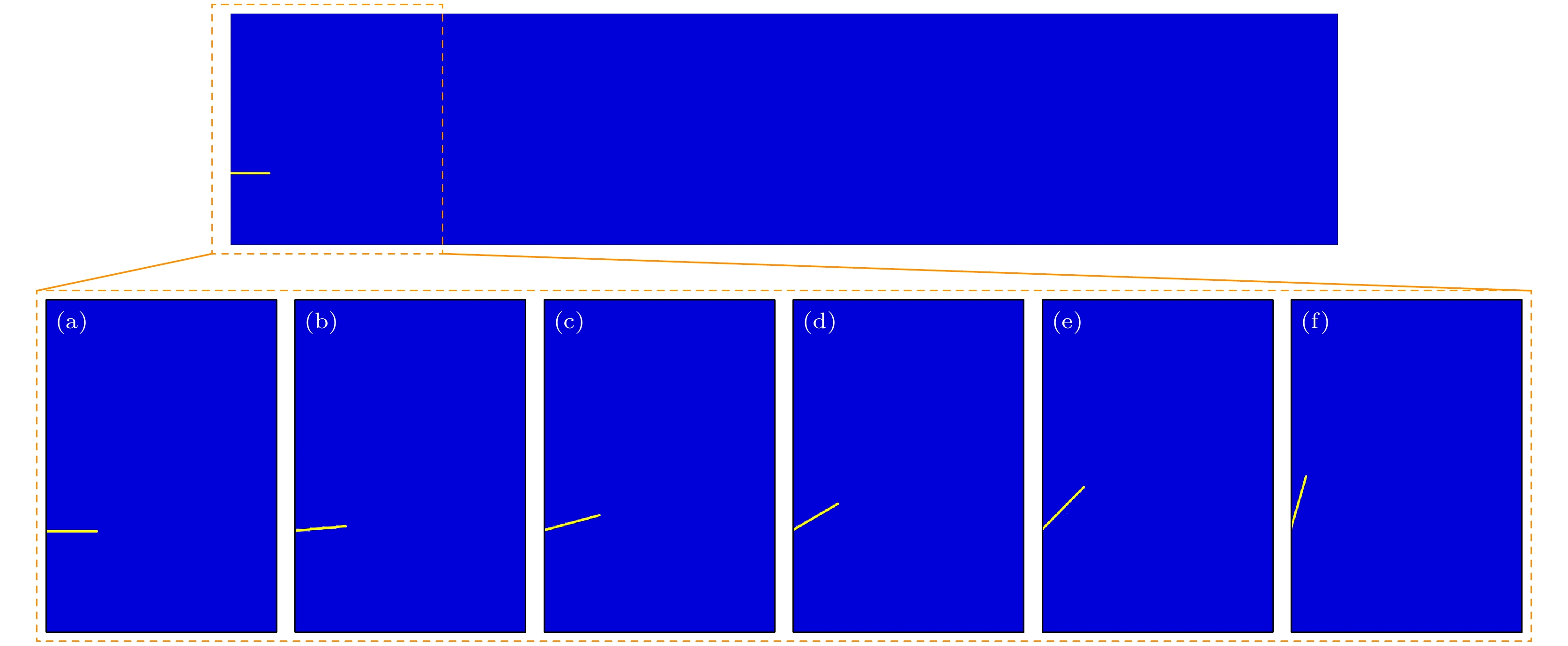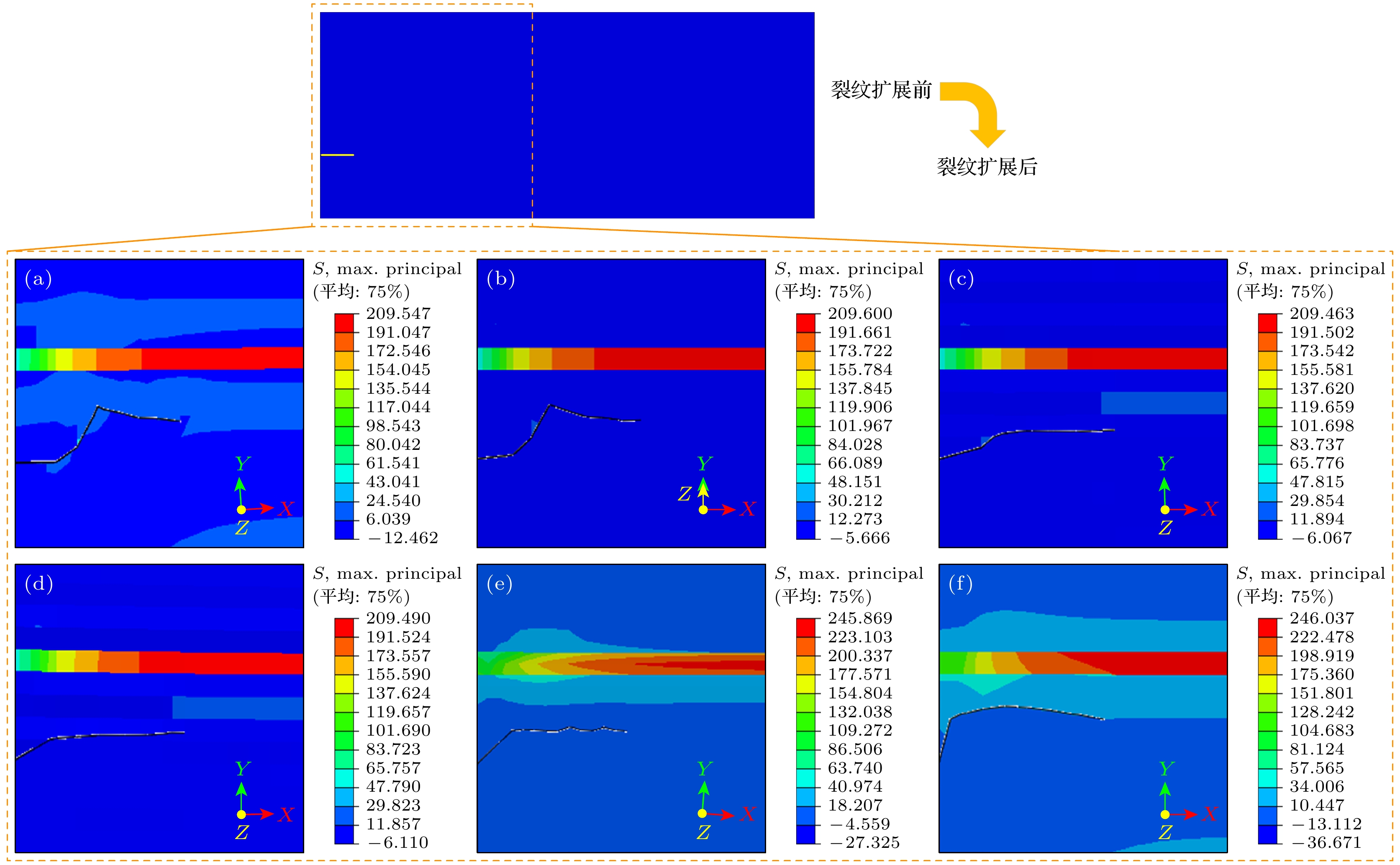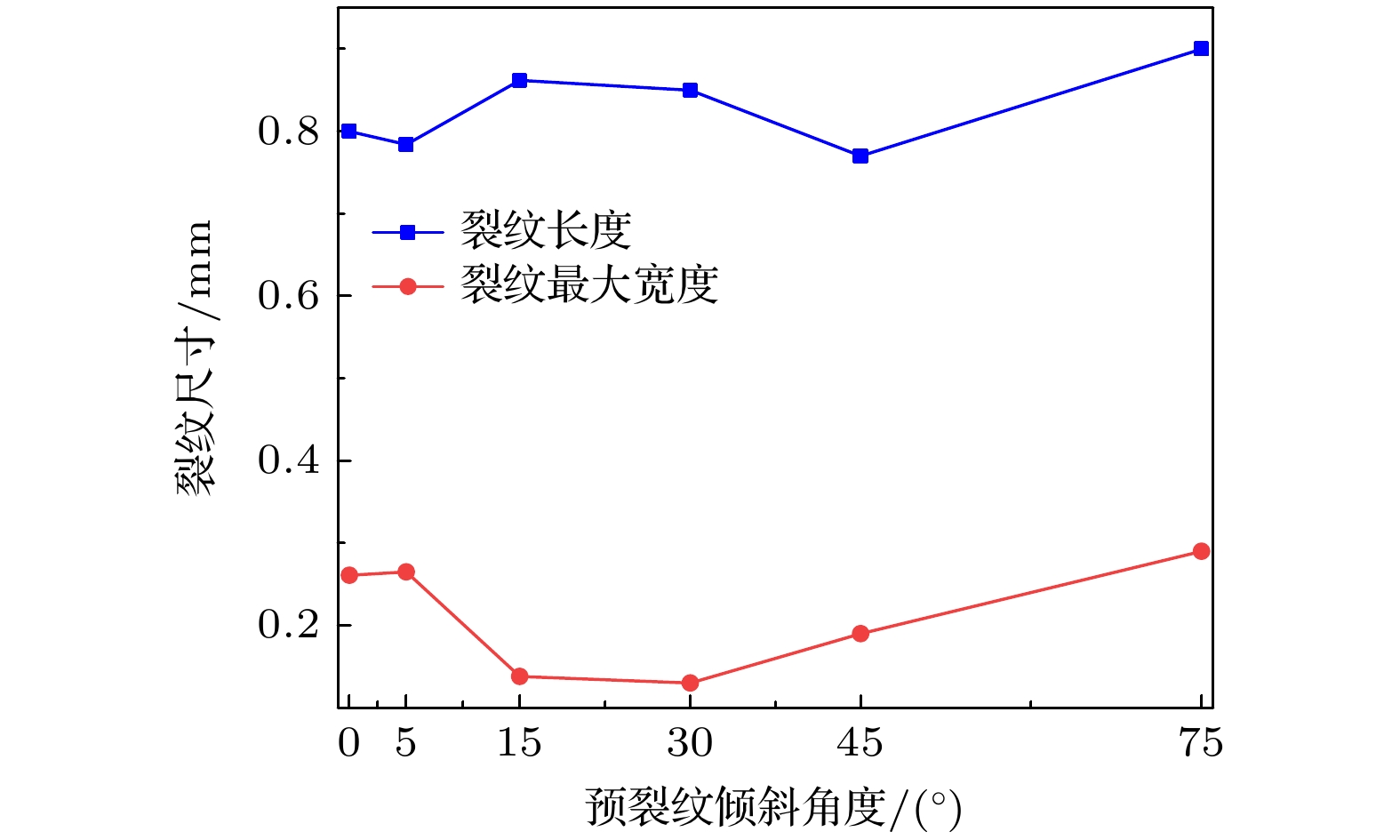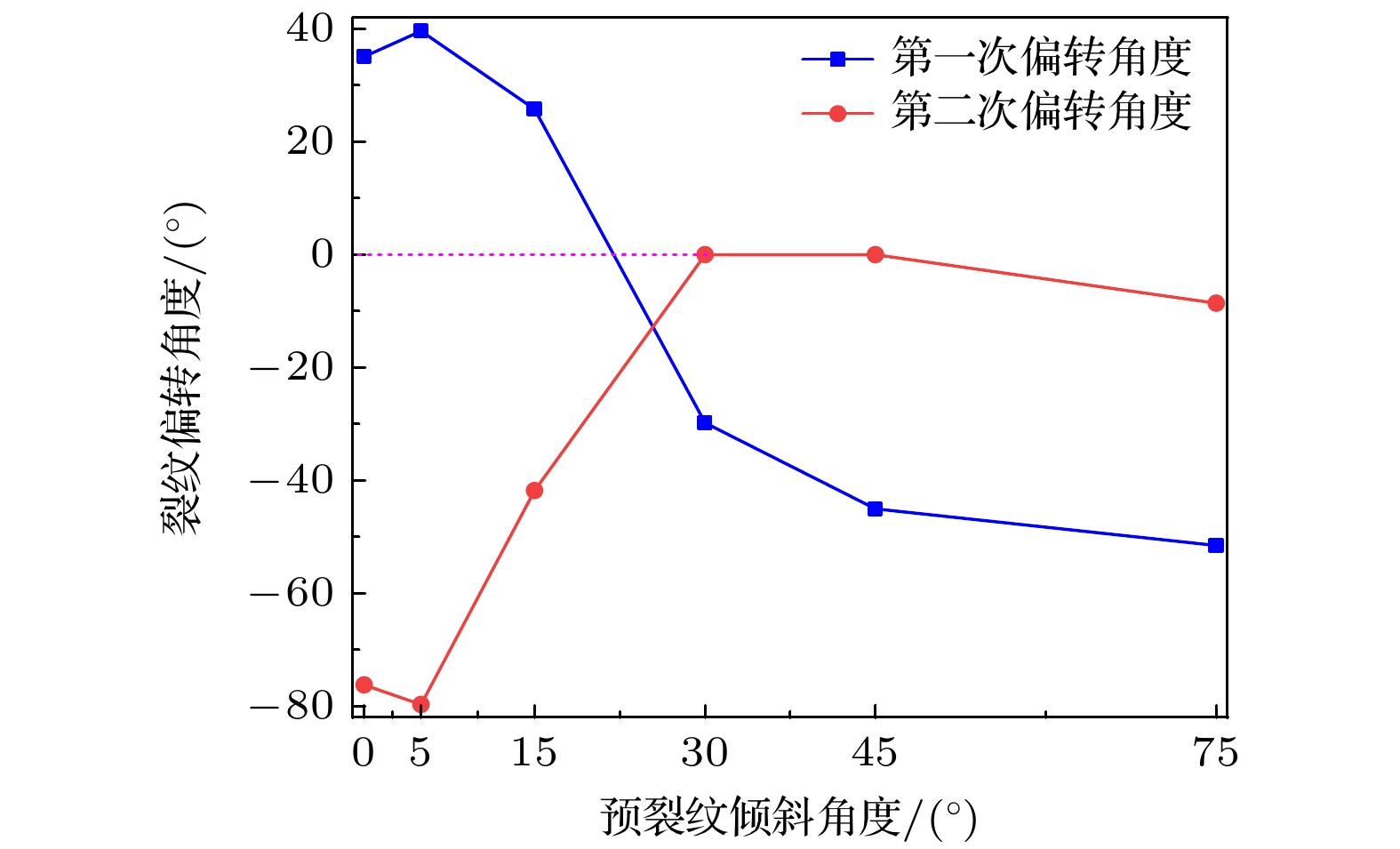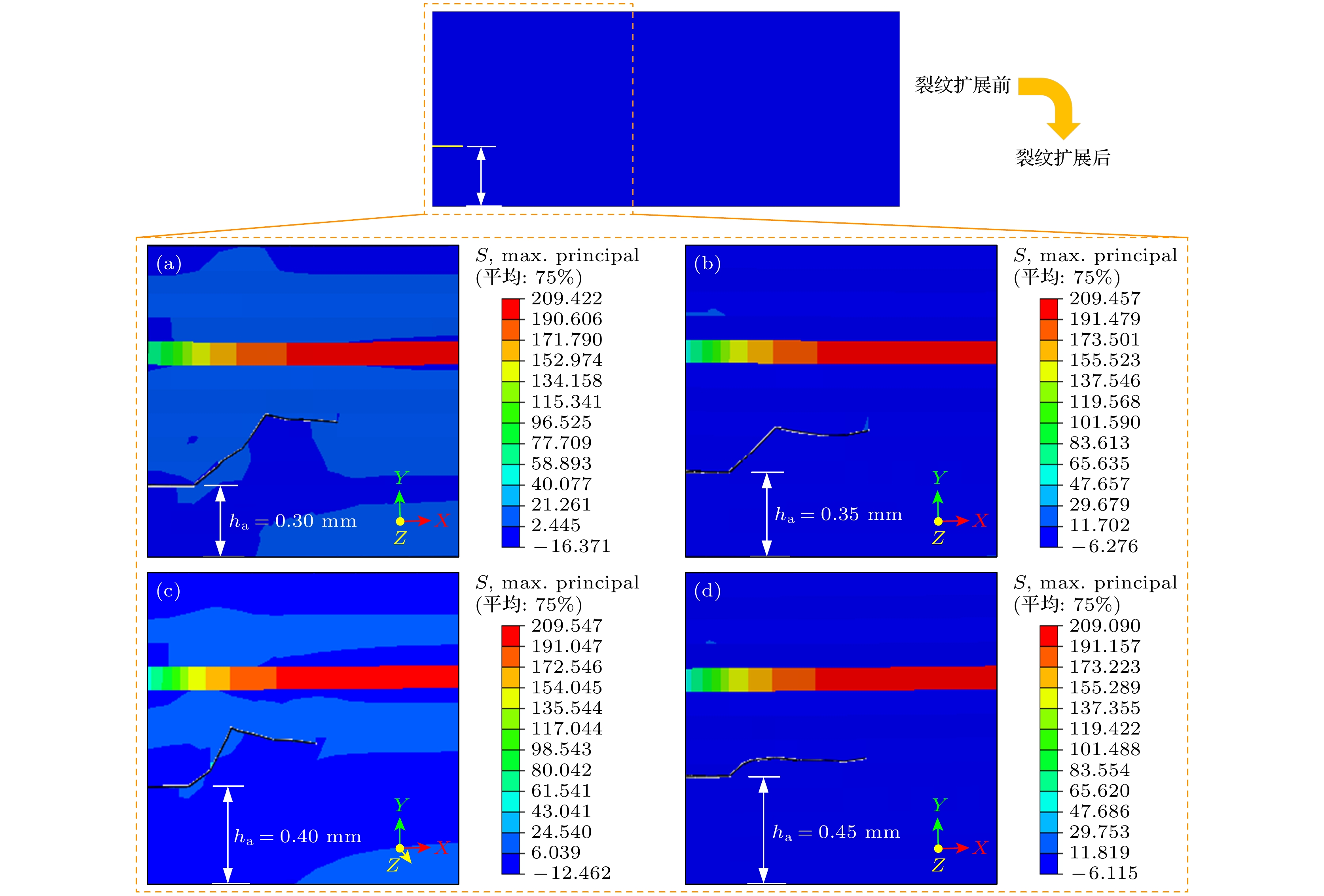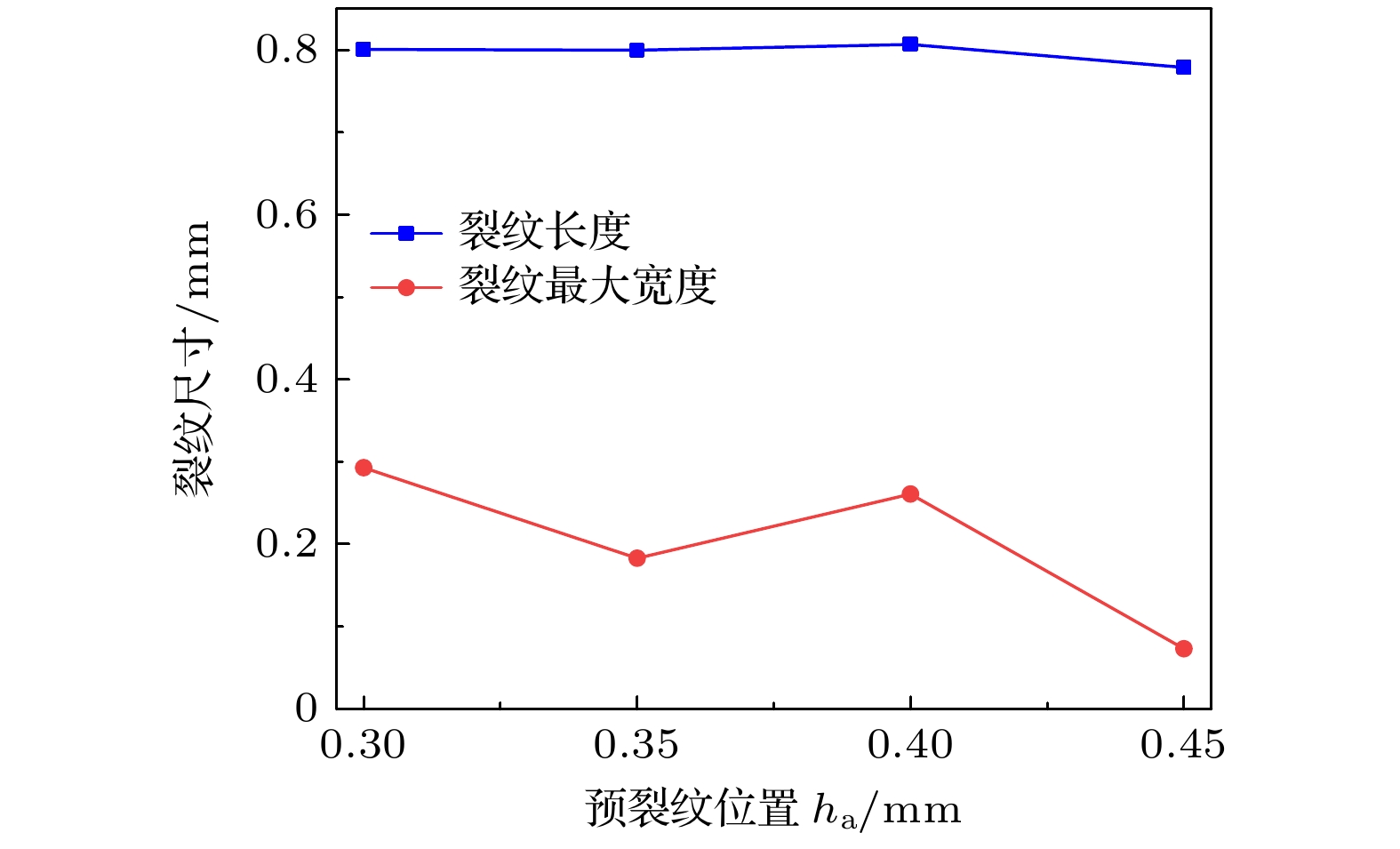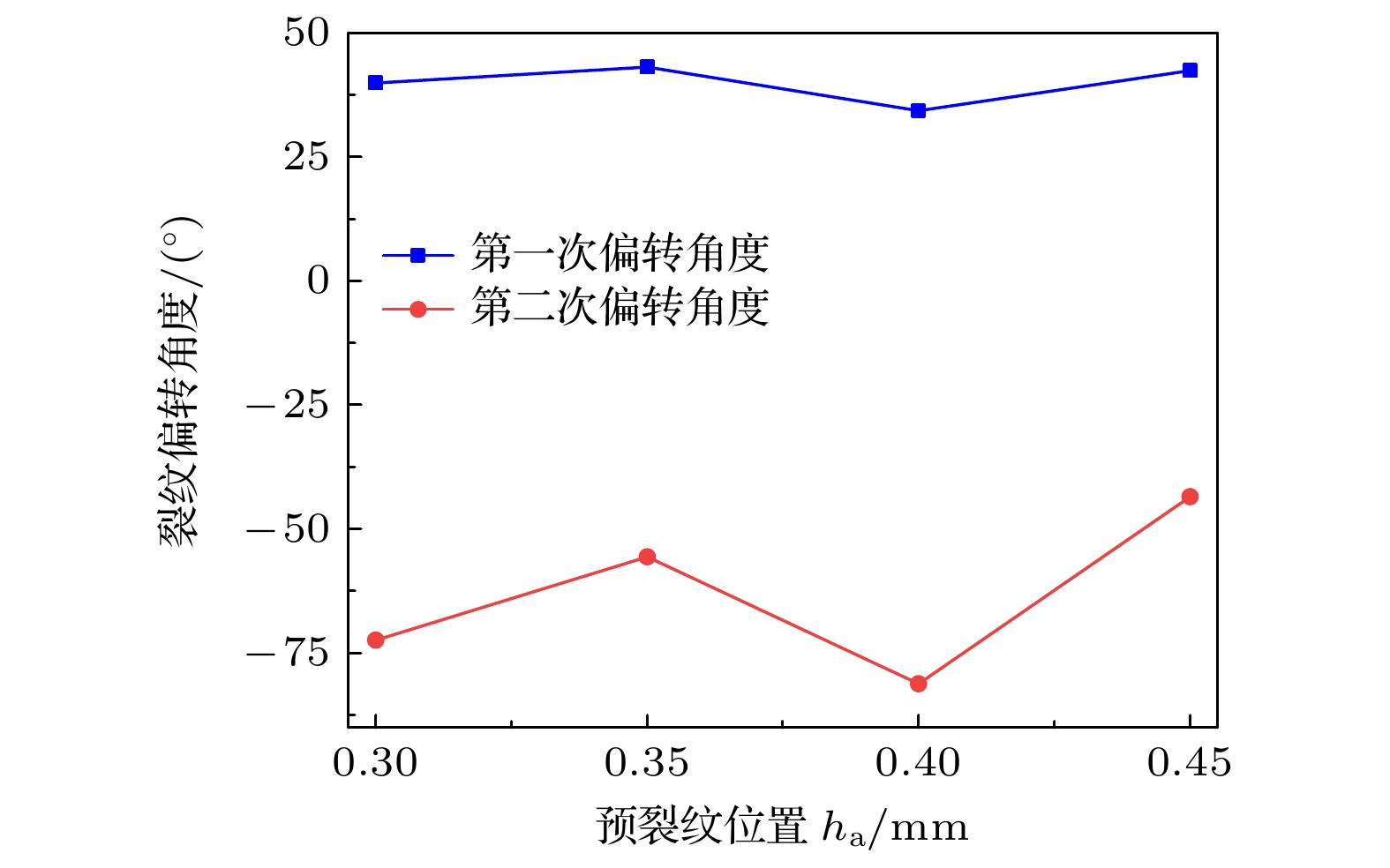-
为了降低固体氧化物燃料电池在冷却过程中的裂纹扩展程度, 提高电池的稳定性和耐久性, 对含有预裂纹的固体氧化物燃料电池的三维模型进行有限元分析. 从工作温度、材料属性、预裂纹角度、预裂纹位置等方面出发, 以电池应力分布、裂纹扩展后的长度、最大宽度和偏转角度等作为判据, 探究各因素对预裂纹扩展行为的影响, 提出基于材料优化和结构优化的提高电池稳定性的方案. 研究结果表明, 在所选参数范围内, 为了抑制裂纹扩展程度, 电池的工作温度不应低于1023 K, 阳极的热膨胀系数应小于12.50×10–6 K–1. 此外, 当预裂纹倾斜角度为45°或预裂纹距阳极底部0.45 mm时, 裂纹扩展后的最大宽度最小, 且扩展方向最易预测, 此时电池受裂纹影响的范围最小, 稳定性最高. 该研究工作为抑制固体氧化物燃料电池的裂纹扩展, 提高燃料电池的使用寿命, 促进燃料电池的商业化进程提供了依据.The mechanical performance of solid oxide fuel cell is one of the main factors limiting its commercialization process. In order to reduce the degree of crack propagation in the cooling process and improve the stability and durability of the cell, the finite element analysis is conducted on a three-dimensional model of solid oxide fuel cell containing pre-crack. Utilizing the extended finite element method (XFEM) and fracture theory, and considering the stress distribution, length and maximum width after crack propagation and deflection angle of crack as criteria, this paper investigates the influence of various parameters, including working temperature, material properties, pre-crack angle, and pre-crack location, on pre-crack propagation behavior and proposes a solution based on material optimization and structural optimization to improve the stability of the cell. A pre-crack is set at the left boundary of the anode to analyze the influence of different operating conditions on the propagation of anode cracks in the cell. The correctness of finite element simulation is verified by comparing the simulation results with theoretical results of crack stress intensity factors in the same model. From the comprehensive analysis of the thermal stress of the cell, the crack length and maximum width after pre-crack propagation, and the two deflection angles of crack propagation, it can be seen that within the selected parameters, in order to ensure the stability of the cell and inhibit the degree of crack propagation, the operating temperature of the cell should not be lower than 1023 K, and the thermal expansion coefficient of anode should be less than 12.50×10–6 K–1. In addition, when the pre-crack angle is 45° or 0.45 mm away from the bottom of anode, the maximum width after crack propagation is the smallest, and the propagation path is the most predictable. In this case, the cell is affected by the smallest crack range and the highest stability. This research provides a guidance for suppressing crack propagation in solid oxide fuel cell, improving the lifetime and promoting the commercialization process of fuel cell.
-
Keywords:
- solid oxide fuel cell /
- pre-crack /
- crack propagation /
- thermal stress
[1] Minh N Q, Takahashi T 1995 Science and Technology of Ceramic Fuel Cells. (Amsterdam: Elsevier Science) p147
[2] Singhal S C, Kendall K 2002 Mater. Today 5 55
 Google Scholar
Google Scholar
[3] 申双林, 张小坤, 万兴文, 郑克晴, 凌意瀚, 王绍荣 2022 71 164401
 Google Scholar
Google Scholar
Shen S L, Zhang X K, Wan X W, Zheng K Q, Ling Y H, Wang S R 2022 Acta Phys. Sin. 71 164401
 Google Scholar
Google Scholar
[4] 徐晗, 张璐, 党政 2020 69 098801
 Google Scholar
Google Scholar
Xu H, Zhang L, Dang Z 2020 Acta Phys. Sin. 69 098801
 Google Scholar
Google Scholar
[5] 李凯, 李霄, 李箭, 谢佳苗 2019 无机材料学报 34 611
 Google Scholar
Google Scholar
Li K, Li X, Li J, Xie J M 2019 J. Inorg. Mater. 34 611
 Google Scholar
Google Scholar
[6] Su Y, Zhu D Y, Zhang T T, Zhang Y R, Han W P, Zhang J, Ramakrishna S, Long Y Z 2022 Chin. Phys. B 31 057305
 Google Scholar
Google Scholar
[7] Shao Q, Fernández-González R, Ruiz-Morales J, et al. 2015 Int. J. Hydrogen Energy 40 16509
 Google Scholar
Google Scholar
[8] Shao Q, Bouhala L, Fiorelli D, Fahs M, Younes A, Núñez P, Belouettar S, Makradi A 2016 Int. J. Solids Struct. 78–79 189
 Google Scholar
Google Scholar
[9] Joulaee N, Makradi A, Ahzi S, Khaleel M A, Koeppel B K 2009 Int. J. Mech. Mater. Des. 5 217
 Google Scholar
Google Scholar
[10] Nguyen B N, Koeppel B J, Ahzi S, Khaleel M A, Singh P 2006 J. Am. Ceram. Soc. 89 1358
 Google Scholar
Google Scholar
[11] Li Q Q, Xue D X, Feng C Y, Zhang X W, Li G J 2022 J. Electrochem. Soc. 169 073507
 Google Scholar
Google Scholar
[12] Bouhala L, Belouettar S, Makradi A, Rémond Y 2010 Mater. Des. 31 1033
 Google Scholar
Google Scholar
[13] Pitakthapanaphong S, Busso E P 2005 Model Simul. Mater. Sci. Eng. 13 531
 Google Scholar
Google Scholar
[14] Kim S J, Choi M B, Park M, Kim H, Son J W, Lee J H, Kim B K, Lee H, Kim S G, Yoon K 2017 J. Power Sources 360 284
 Google Scholar
Google Scholar
[15] 李录贤, 王铁军 2005 力学进展 35 5
 Google Scholar
Google Scholar
Li L X, Wang T J 2005 Adv. Mech. 35 5
 Google Scholar
Google Scholar
[16] 王自强, 陈少华 2009 高等断裂力学(北京: 科学技术出版社) 第87页
Wang Z Q, Chen S H 2009 Advanced Fracture Mechanics (Beijing: Science and Technology Press) p87
[17] Ergodan F, Sih G C 1963 J. Basic Sci. Eng. 85 520
[18] Chang K J 1981 Eng. Fract. Mech. 14 107
 Google Scholar
Google Scholar
[19] Hussain M A, Pu S L, Underwood J H 1974 Strain Energy Release Rate for a Crack under Combined Mode I and Mode II (West Conshohocken: ASTM International) p35
[20] Mori M, Yamamoto T, Itoh H, Inaba H, Tagawa H 1998 J. Electrochem. Soc. 145 1374
 Google Scholar
Google Scholar
[21] Sameshima S, Ichikawa T, Kawaminami M, Hirata Y 1999 Mater. Chem. Phys. 61 31
 Google Scholar
Google Scholar
[22] Nakajo A, Mueller F, Brouwer J, Favrat D 2012 Int. J. Hydrogen Energy 37 9249
 Google Scholar
Google Scholar
[23] Nakajo A, Mueller F, Brouwer J, Favrat D 2012 Int. J. Hydrogen Energy 37 9269
 Google Scholar
Google Scholar
[24] Petruzzi L, Cocchi S, Fineschi F 2003 J. Power Sources 118 96
 Google Scholar
Google Scholar
[25] Nakajo A, Kuebler J, Faes A, et al. 2012 Ceram. Int. 38 3907
 Google Scholar
Google Scholar
[26] Chatterjee A, Sharma G, Varshney J, Neogy S, Singh R N 2017 Mater. Sci. Eng. 684 626
 Google Scholar
Google Scholar
[27] Nakajo A, Stiller C, Harkegard G, Bolland O 2006 J. Power Sources 158 287
 Google Scholar
Google Scholar
[28] Tada H, Paris P C, Irwin G R 1973 The Stress Analysis of Cracks Handbook (New York: ASME Press) p30
[29] 朱传锐 2010 硕士学位论文 (郑州: 河南理工大学)
Zhu C Y 2010 M. S. Thesis (Zhengzhou: Henan Polytechnic University
[30] 陈浩 2022 博士学位论文 (兰州: 兰州大学)
Chen H 2022 Ph. D. Dissertation (Lanzhou: Lanzhou University
[31] Junya K, Hirohisa S, Katsuhiro K, Toshio N 2004 J. Alloys Compd. 365 253
 Google Scholar
Google Scholar
[32] Pihlatie M, Kaiser A, Mogensen M 2009 J. Eur. Ceram. Soc. 29 1657
 Google Scholar
Google Scholar
[33] Biswas S, Nithyanantham T, Saraswathi N, Bandopadhyay S 2009 J. Mater. Sci. 44 778
 Google Scholar
Google Scholar
[34] Chen T, Yao C, Hu L, Huang C, Li X 2019 Thin Wall. Struct 143 143106196
[35] El-Emam M H, Salim A H, Sallam M E H 2016 J. Struct. Eng. 143 04016229
-
图 2 应力强度因子随倾斜角变化的数值计算结果与理论解析解的对比图 (a) 无限大平板几何模型和边界条件; (b) 应力强度因子对比曲线
Fig. 2. The comparison between the numerical result and theoretical analytical solution of stress intensity factor with the inclination angle : (a) The infinite plate geometric model and boundary conditions; (b) stress-intensity factor contrast curve.
图 7 不同热膨胀系数下SOFC阳极预裂纹扩展后的应力云图(Z-方向视图) (a) 12.00×10–6 K–1; (b) 12.41×10–6 K–1; (c) 12.50×10–6 K–1; (d) 13.00×10–6 K–1
Fig. 7. Stress nephogram of SOFC anode pre-crack propagation under different thermal expansion coefficients (Z-direction view): (a) 12.00×10–6 K–1; (b) 12.41×10–6 K–1; (c) 12.50×10–6 K–1; (d) 13.00×10–6 K–1
材料属性 阳极
Ni-YSZ电解质
YSZ阴极
LSM弹性模量
E/GPa298 K 72.5 196.3 41.3 1073 K 58.1 148.6 48.3 泊松比 μ 298 K 0.36 0.31 0.33 1073 K 0.36 0.31 0.33 热膨胀系数
α/(10–6 K–1)298 K 12.41 10.0 9.8 1073 K 12.60 10.5 11.8 表 2 裂纹开裂后左端裂尖的应力强度因子和开裂角
Table 2. Stress intensity factor and cracking angle at the left crack tip after crack propagation.
步数 KI/(MPa·$ \sqrt {\text{m}} $) KII/(MPa·$ \sqrt {\text{m}} $) θ/(º) 前人结果[29] 本文结果 误差/% 前人结果[29] 本文结果 误差/% 前人结果[29] 本文结果 误差/% 初始 1.7394 1.7380 0.08 1.000 1.002 0.20 –0.7528 –0.7530 0.03 1 2.1129 2.1131 0.02 –0.6982 –0.6985 0.04 0.5442 0.5445 0.05 2 4.2294 4.2294 0 0.7843 0.7845 0.03 –0.5365 –0.5365 0 3 4.2843 4.2845 0.07 –0.6983 –0.6988 0.07 0.4596 0.4601 0.10 4 4.2254 4.2254 0 0.7370 0.7374 0.05 –0.4498 –0.4498 0 5 4.2779 4.2784 0.01 –0.5585 –0.5590 0.09 0.3123 0.3123 0 6 4.2528 4.2533 0.01 0.4764 0.4768 0.08 –0.2526 –0.2527 0.04 表 3 裂纹开裂后右端裂尖的应力强度因子和开裂角
Table 3. Stress intensity factor and crack angle of right end crack tip after crack propagation.
步数 KI/(MPa·$ \sqrt {\text{m}} $) KII/(MPa·$ \sqrt {\text{m}} $) θ/(º) 前人结果[29] 本文结果 误差
/%前人结果[29] 本文结果 误差
/%前人结果[29] 本文结果 误差
/%初始 1.7803 1.7805 0.01 0.9857 0.9857 0 –0.7393 –0.7393 0 1 2.1168 2.1168 0 –0.7279 –0.7282 0.04 0.5593 0.5588 0.08 2 2.4731 2.4736 0.02 0.7963 0.7963 0 –0.5344 –0.5340 0.07 3 2.6760 2.6757 0.01 –0.8094 –0.8099 0.06 0.5110 0.5110 0 4 2.9802 2.9805 0.01 0.8856 0.8856 0 –0.5044 0.5048 0.08 5 3.3000 3.3000 0 –0.9070 0.9073 0.03 0.4759 0.4759 0 6 3.6713 3.6709 0.01 0.9229 0.9233 0.04 0.4441 0.4435 0.13 表 4 不同方案的阳极热膨胀系数
Table 4. The thermal expansion coefficient of anode in different schemes.
参 数 298 K 1073 K 阳极热膨胀系数/(10–6 K–1) 12.00 12.60 12.41 12.60 12.50 13.13 13.00 13.65 -
[1] Minh N Q, Takahashi T 1995 Science and Technology of Ceramic Fuel Cells. (Amsterdam: Elsevier Science) p147
[2] Singhal S C, Kendall K 2002 Mater. Today 5 55
 Google Scholar
Google Scholar
[3] 申双林, 张小坤, 万兴文, 郑克晴, 凌意瀚, 王绍荣 2022 71 164401
 Google Scholar
Google Scholar
Shen S L, Zhang X K, Wan X W, Zheng K Q, Ling Y H, Wang S R 2022 Acta Phys. Sin. 71 164401
 Google Scholar
Google Scholar
[4] 徐晗, 张璐, 党政 2020 69 098801
 Google Scholar
Google Scholar
Xu H, Zhang L, Dang Z 2020 Acta Phys. Sin. 69 098801
 Google Scholar
Google Scholar
[5] 李凯, 李霄, 李箭, 谢佳苗 2019 无机材料学报 34 611
 Google Scholar
Google Scholar
Li K, Li X, Li J, Xie J M 2019 J. Inorg. Mater. 34 611
 Google Scholar
Google Scholar
[6] Su Y, Zhu D Y, Zhang T T, Zhang Y R, Han W P, Zhang J, Ramakrishna S, Long Y Z 2022 Chin. Phys. B 31 057305
 Google Scholar
Google Scholar
[7] Shao Q, Fernández-González R, Ruiz-Morales J, et al. 2015 Int. J. Hydrogen Energy 40 16509
 Google Scholar
Google Scholar
[8] Shao Q, Bouhala L, Fiorelli D, Fahs M, Younes A, Núñez P, Belouettar S, Makradi A 2016 Int. J. Solids Struct. 78–79 189
 Google Scholar
Google Scholar
[9] Joulaee N, Makradi A, Ahzi S, Khaleel M A, Koeppel B K 2009 Int. J. Mech. Mater. Des. 5 217
 Google Scholar
Google Scholar
[10] Nguyen B N, Koeppel B J, Ahzi S, Khaleel M A, Singh P 2006 J. Am. Ceram. Soc. 89 1358
 Google Scholar
Google Scholar
[11] Li Q Q, Xue D X, Feng C Y, Zhang X W, Li G J 2022 J. Electrochem. Soc. 169 073507
 Google Scholar
Google Scholar
[12] Bouhala L, Belouettar S, Makradi A, Rémond Y 2010 Mater. Des. 31 1033
 Google Scholar
Google Scholar
[13] Pitakthapanaphong S, Busso E P 2005 Model Simul. Mater. Sci. Eng. 13 531
 Google Scholar
Google Scholar
[14] Kim S J, Choi M B, Park M, Kim H, Son J W, Lee J H, Kim B K, Lee H, Kim S G, Yoon K 2017 J. Power Sources 360 284
 Google Scholar
Google Scholar
[15] 李录贤, 王铁军 2005 力学进展 35 5
 Google Scholar
Google Scholar
Li L X, Wang T J 2005 Adv. Mech. 35 5
 Google Scholar
Google Scholar
[16] 王自强, 陈少华 2009 高等断裂力学(北京: 科学技术出版社) 第87页
Wang Z Q, Chen S H 2009 Advanced Fracture Mechanics (Beijing: Science and Technology Press) p87
[17] Ergodan F, Sih G C 1963 J. Basic Sci. Eng. 85 520
[18] Chang K J 1981 Eng. Fract. Mech. 14 107
 Google Scholar
Google Scholar
[19] Hussain M A, Pu S L, Underwood J H 1974 Strain Energy Release Rate for a Crack under Combined Mode I and Mode II (West Conshohocken: ASTM International) p35
[20] Mori M, Yamamoto T, Itoh H, Inaba H, Tagawa H 1998 J. Electrochem. Soc. 145 1374
 Google Scholar
Google Scholar
[21] Sameshima S, Ichikawa T, Kawaminami M, Hirata Y 1999 Mater. Chem. Phys. 61 31
 Google Scholar
Google Scholar
[22] Nakajo A, Mueller F, Brouwer J, Favrat D 2012 Int. J. Hydrogen Energy 37 9249
 Google Scholar
Google Scholar
[23] Nakajo A, Mueller F, Brouwer J, Favrat D 2012 Int. J. Hydrogen Energy 37 9269
 Google Scholar
Google Scholar
[24] Petruzzi L, Cocchi S, Fineschi F 2003 J. Power Sources 118 96
 Google Scholar
Google Scholar
[25] Nakajo A, Kuebler J, Faes A, et al. 2012 Ceram. Int. 38 3907
 Google Scholar
Google Scholar
[26] Chatterjee A, Sharma G, Varshney J, Neogy S, Singh R N 2017 Mater. Sci. Eng. 684 626
 Google Scholar
Google Scholar
[27] Nakajo A, Stiller C, Harkegard G, Bolland O 2006 J. Power Sources 158 287
 Google Scholar
Google Scholar
[28] Tada H, Paris P C, Irwin G R 1973 The Stress Analysis of Cracks Handbook (New York: ASME Press) p30
[29] 朱传锐 2010 硕士学位论文 (郑州: 河南理工大学)
Zhu C Y 2010 M. S. Thesis (Zhengzhou: Henan Polytechnic University
[30] 陈浩 2022 博士学位论文 (兰州: 兰州大学)
Chen H 2022 Ph. D. Dissertation (Lanzhou: Lanzhou University
[31] Junya K, Hirohisa S, Katsuhiro K, Toshio N 2004 J. Alloys Compd. 365 253
 Google Scholar
Google Scholar
[32] Pihlatie M, Kaiser A, Mogensen M 2009 J. Eur. Ceram. Soc. 29 1657
 Google Scholar
Google Scholar
[33] Biswas S, Nithyanantham T, Saraswathi N, Bandopadhyay S 2009 J. Mater. Sci. 44 778
 Google Scholar
Google Scholar
[34] Chen T, Yao C, Hu L, Huang C, Li X 2019 Thin Wall. Struct 143 143106196
[35] El-Emam M H, Salim A H, Sallam M E H 2016 J. Struct. Eng. 143 04016229
计量
- 文章访问数: 3155
- PDF下载量: 78
- 被引次数: 0













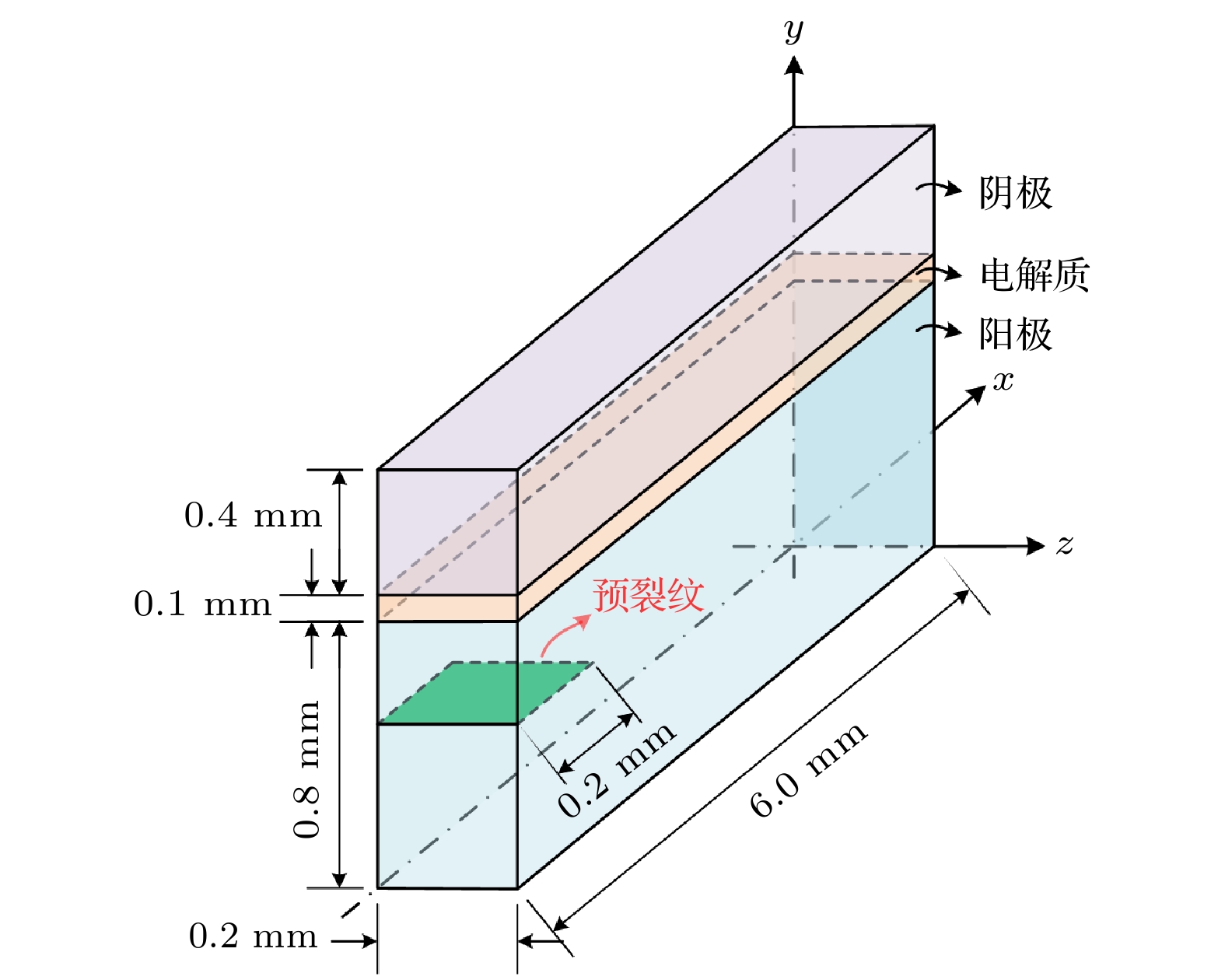
 下载:
下载:


